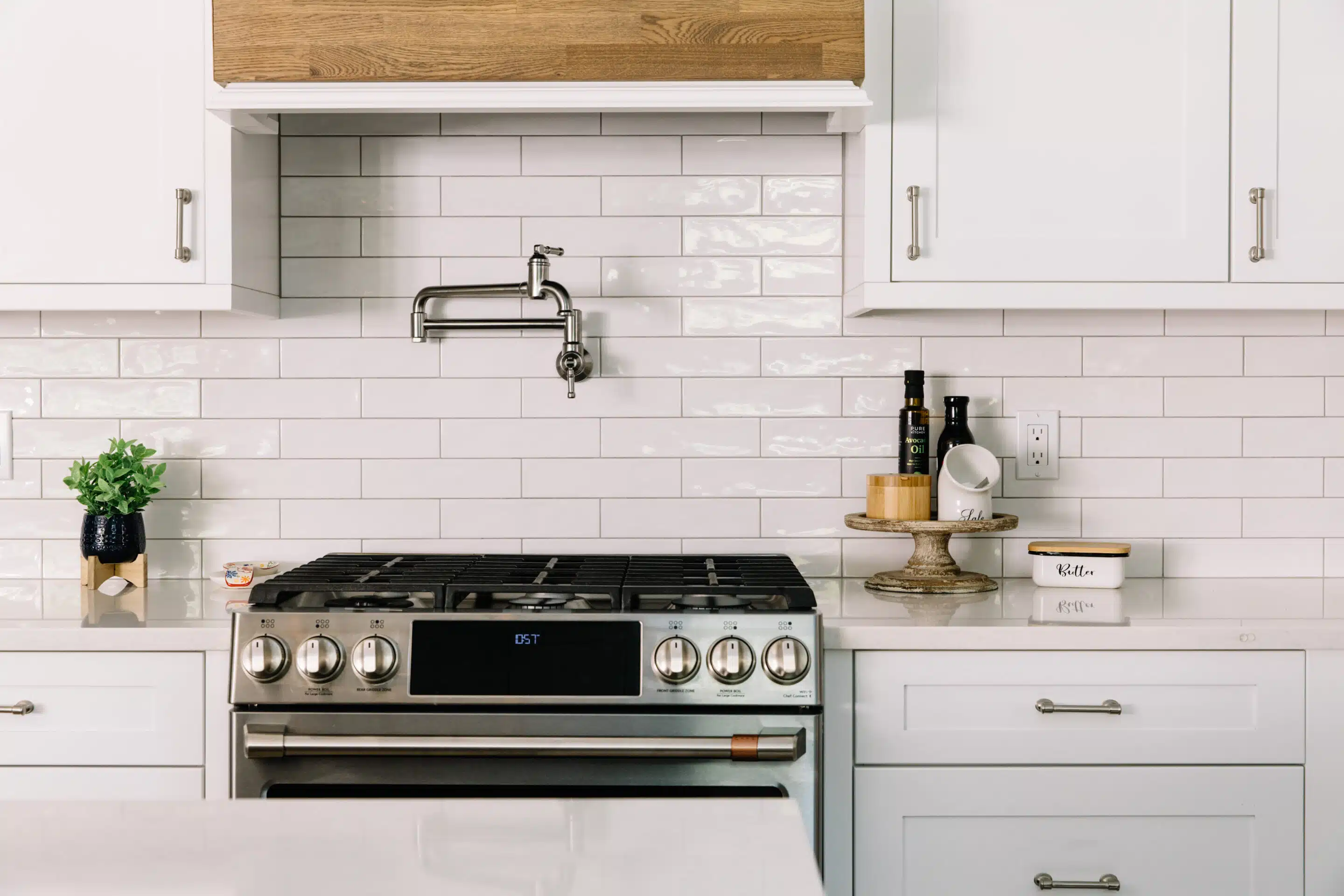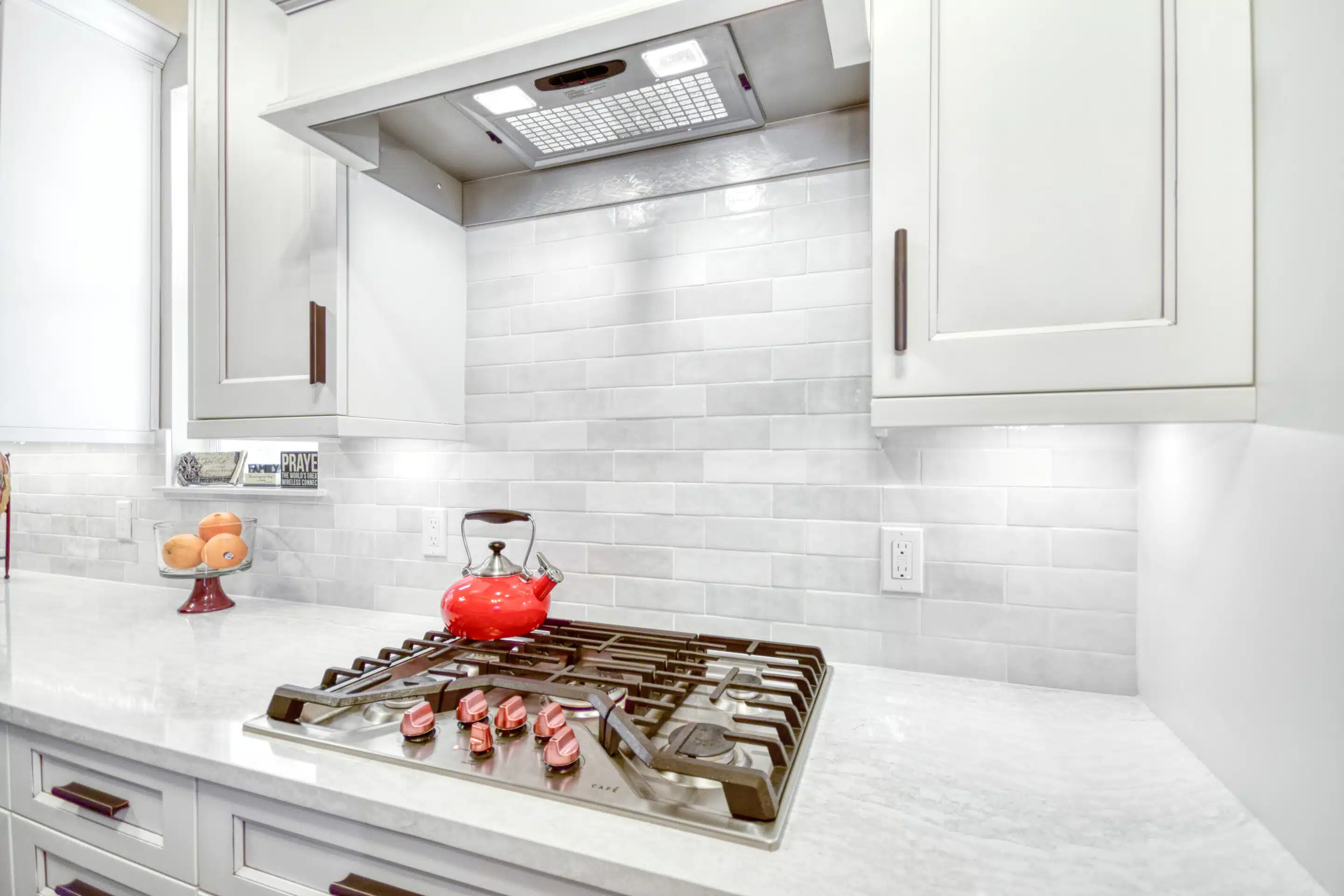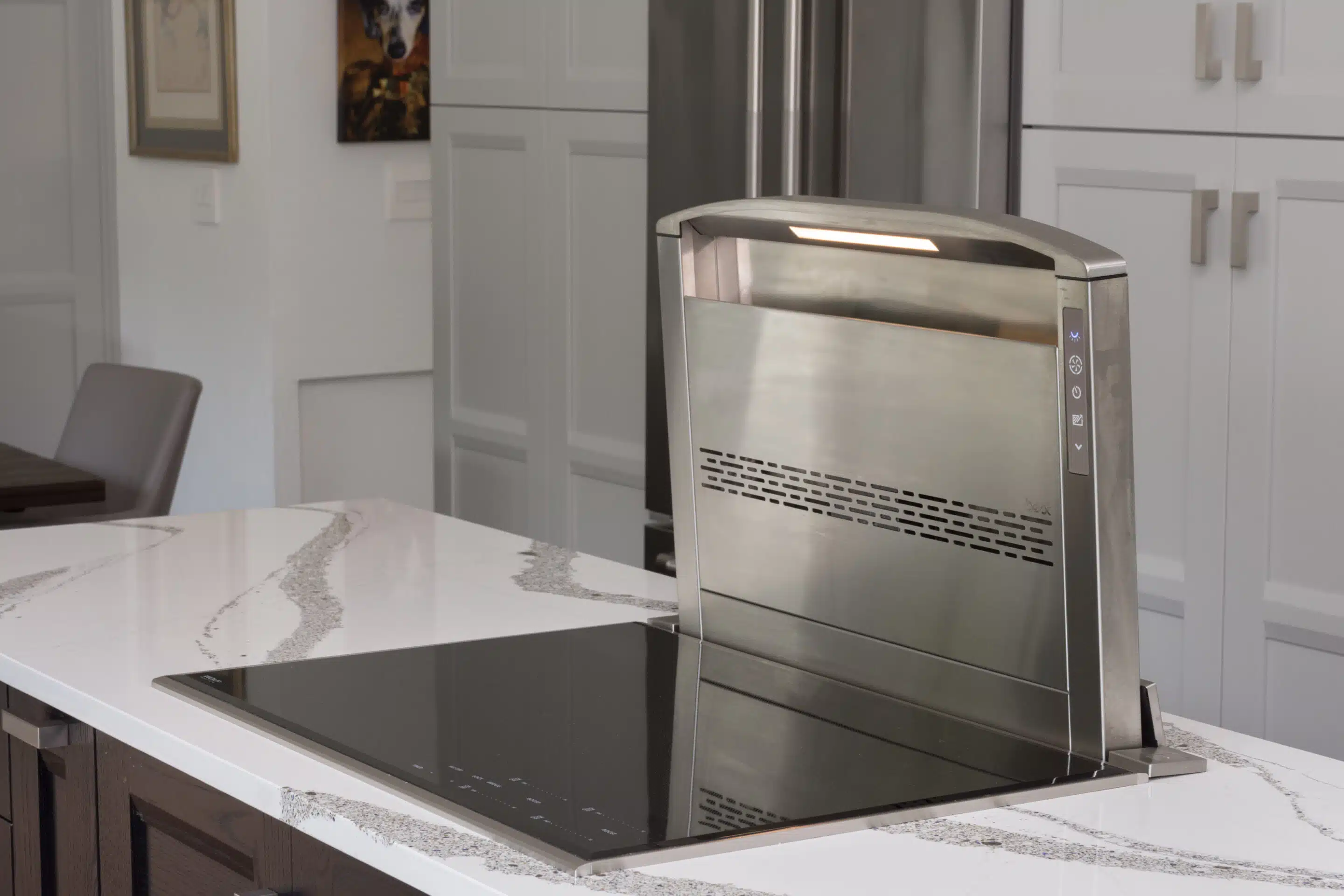Do Gas Stoves Cause Indoor Air Pollution?
The kitchen is one of the most important focal points of your home. And it’s often the first place homeowners choose to remodel.
If you’re one of those homeowners, you might be considering whether or not you should get a brand new stove. But you love your gas stove. You love how fast it heats, how evenly it cooks your food, and how easy it is to clean.
So, what’s not to love about your gas stove? How about the potential air pollution it can cause? Yep, that’s right. The most common source of indoor air pollution might be sitting in your kitchen—the very thing you use to make your favorite dishes.
If that’s the case, should you get rid of your gas stove? If so, what are the alternatives? Lets find out!
Is Your Gas Stove Harmful to Your Health?
Click the image to see this full project
More than a third of Americans cook with gas. And many believe that gas stoves are more harmful to the environment and human health than their electric counterparts.
When cooking in an unventilated space, gas burners tend to create elevated levels of nitrogen dioxide (NO₂), which can be a trigger for asthma attacks and other respiratory illnesses in people with asthma. However, unless you already have asthma, these dangers likely aren’t unique to using gas.
Older gas burners can cause carbon dioxide (CO₂) emissions, which can be toxic. But if you have a modern gas burner design, the concern for CO₂ emissions isn’t as significant. Plus, exposure to carbon dioxide isn’t a long-term risk since you recover from CO₂ once exposure stops.
That means when you’re not cooking, your lungs are recovering, which means the exposure to CO₂ is likely not enough to cause any long-term problems.
Although pollution from gas cooking has potential health risks, it doesn’t mean you can’t face the same risks with other types of stoves. Any kind of indoor cooking can create ultrafine particles that are linked to health problems. So, even if you’re using an electric or induction stovetop, you’re being exposed to potentially harmful gasses.
The key to cooking on a gas stove is ventilation. If you have a well-ventilated kitchen, the risk of respiratory illness from gas cooking decreases, which leads us to the next section.
How Can You Improve Ventilation With a Gas Stove?
Click the image to see this full project
If you’re not looking to replace your gas stove right now, there are some steps you can take to improve the ventilation in your kitchen. Let’s take a look at simple changes you can make in your kitchen to reduce toxic emissions.
- Put your range hood to use: To mitigate harmful gasses and improve air circulation, turn on the range fan before you start cooking. It’s also important to properly maintain your range hood by changing the filter regularly. How often you replace your filter depends on how much you cook, but once a year is a good rule of thumb to follow.
- Use a kitchen fan: If your space lacks a range hood, invest in a fan for your kitchen. Place a fan in your kitchen window so that it brings in fresh air into the room while sucking out stagnant, smelly air. What if you don’t have a kitchen window? You can open windows in nearby rooms. You can also put a fan in the kitchen doorway facing out so that it sucks air from the kitchen.
- Open windows: Of course, opening windows can improve ventilation in your kitchen. But it’s how you do it that most impacts airflow. Keep interior doors open and then, open windows and/or exterior doors to push stagnant, polluted air out.
Reasons Why You Might Consider Replacing Your Gas Stove
Click the image to see this full project
Still worried that gas stoves emit more noxious gasses than other stove tops? If so, then it may be best for you to replace your gas stove with another option.
Below are other reasons why you might consider getting rid of your gas stove.
- Gas stove emissions aren’t regulated by a federal agency: Federal agencies, including the Environmental Protection Agency (EPA) and the Consumer Product Safety Commission (CPSC) aren’t regulating potential harmful emissions from gas stoves. This means there’s really no government agency that ensures the safety of gas stove emissions. This means that homeowners are operating them at their own risk. However, it’s important to note that the American Gas Association (AGA) responds to these concerns by pointing out that cooking fumes come from all types of stoves.
- You have children: Some research has found that children are more susceptible to illnesses associated with air pollution than adults. That’s because children tend to have higher breathing rates, greater levels of physical activity, and immature respiratory and immune systems. This means that if you have children, they’re at greater risk of developing respiratory illnesses caused by gas based cooking.
- Gas stoves can generate unsafe levels of indoor air pollution: In addition to nitrogen oxides (NOx), gas cooking also produces PM2.5—a potentially dangerous air pollutant. According to research by the U.S. Department of Energy’s Office of Scientific and Technical Information (OSTI), gas cooktops produce double the amount of PM2.5 as electric cooktops.
- You or a family member suffers from heart disease: The release of carbon monoxide (CO) is another concern with gas cooking. But typically, you have to be exposed to high levels of CO to experience dangerous effects. Usually, something has to go wrong in the kitchen for this to happen. For example, the pilot light may be on, you could be in a poorly ventilated kitchen, or you may have accidentally left the burner on. If you have a cardiovascular illness, even low-level exposure to CO can cause issues. And considering average CO levels for gas stoves are often higher than those of other types of stovetops, a gas stove may be a health concern for some individuals.
What Are Good Alternatives to Gas Stoves?
Click the image to see this full project
Looking to phase gas out of your cooking? You’ve got two options: electric or induction stovetops. Induction stoves are a type of electric cooktop, except that heat is transferred in a different way. Traditional electric stovetops heat the element (the burner) that then heats the bottom of the pan. On the other hand, an induction stove directly heats the pot or pan.
This means that with induction, the stovetop is cool to the touch. So, since induction stovetops rely on electric energy rather than an open flame for heating, they produce less air pollution than gas or electric stoves.
Furthermore, electric stoves produce less air pollution than gas stoves because they don’t involve the emission of gasses to create heat. Instead, they use electricity to provide heat.
The Bottom Line
So, should you get rid of your gas stove? The answer will depend on your individual situation. It’s important to understand that there are some health risks associated with gas cooking. But if you’re not in a high-risk group, using a gas stove probably won’t cause serious health problems. Plus, if your kitchen is well-ventilated, you likely don’t have anything to worry about.
But on the flipside, if you’re looking to replace your stove anyway, it’s a good choice to avoid gas and go with an electric or induction cooktop. Can’t decide? McManus Kitchen and Bath can help you make the right choice for you. Schedule a free consult today.
Ready To Remodel?
McManus Kitchen and Bath is a design and build company specializing in kitchen and bath remodels




